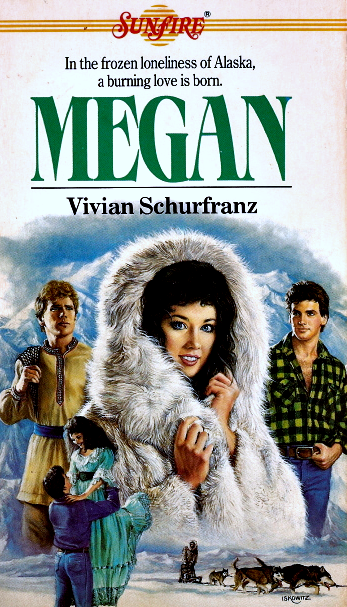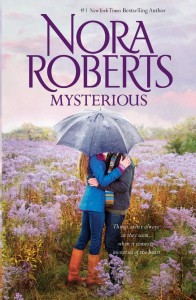Greetings, lovely people! This week at Unstressed Syllables, we’re focusing on contemporary romance and chick lit. Now, I’ll be the first to admit that these aren’t my wheelhouse genres. So, I’m kicking off the romance by sharing with you a few tidbits I’ve picked up from expert Nora Roberts*.
Just Tell the Story
“My only job is to tell the story. I think that if more writers focused on that, they’d be better off and probably more successful.”
~Nora Roberts
As far as I’m concerned, Roberts hits the nail on its proverbial little head and pounds that sucker so deep into the ground, it might as well be Excalibur wedged into rock of legendary proportions. Tell the story. It’s just you and your story, people. It’s just you and your storypeople. Roberts says you “go into a box” with that story, and you don’t come out until it’s done.
Until the story is done, you don’t worry about what it looks like to other people. Until the story is done, you forget about all the trappings and trimmings that will eventually help you sell it. Until the story is done (if even then), you don’t concern yourself with its possible themes and morals. Just tell the story. That’s your only job.
Obviously, this applies to writing any genre, not just romance!
It’s All About Relationships
 According to Roberts, the most important part of writing romance is the relationships.
According to Roberts, the most important part of writing romance is the relationships.
“It’s all about the relationships…interesting, dynamic people…developing a relationship with its problems and its complexities and its conflicts…. Whatever plot there is…it is all about who these people are and what they’re going to bring to each other.”
~Nora Roberts
Okay, so I fibbed a little in my first paragraph. I said that romance isn’t in my wheelhouse, implying that it’s not a genre I’m familiar with. But I kinda am familiar with it…because I spent my entire teenhood reading Sunfire Romances.
If you’re a 30-something female, chances are pretty good you know what I’m talking about. The Sunfire Romances were a series of YA novels that had three things in common:
- Each title was its heroine’s name.
- The background plot was a major historical event.
- Each heroine spent the course of the novel overcoming the adversities inherent in the historical event and choosing between two vastly different love interests.
It’s been almost twenty years since I’ve read any of those stories, but I still remember those girls and their dashing guys. Danielle had to choose between pirate Geoffrey and richboy Paul. Merrie had to choose between pilgrim Zachariah and sailor Luke. Victoria’s guys were landowner Luis and Texas Ranger Cade. Megan felt torn between fisherman Ivan and emporium boy Adam.
In each of these novels, the author introduces the heroine and the love interest she “should” choose if her life goes as planned. The historical events complicate matters, as does the introduction of the alternate love interest. Whom does the the heroine choose? Well, sometimes it’s the first guy, sometimes it’s the new guy. Sometimes, her decisions about how to weather the historical storm affect her choice of love interest. Part of the fun in these stories was not being able to predict the course of each relationship.
But though the historical events created complications for the heroine, the driving force of each novel was her relationship with the two guys. Each offered her a different kind of validation and a different life. Twenty years later, I still remember those relationships–they were that vivid and that well-written. I remember the fierce joy in reading how these smart, resourceful young women thought for themselves and made their own choices, instead of getting “swept off their feet.” Well, Danielle kind of got swept off hers for a while. But she came around and stood up for her principles in the end. ; )
Stormy, passionate, believable relationships are memorable. Novels crafted around such relationships are also memorable.
Back to Your Storypeople
“Character is key. Character is plot–character is everything and the story wraps around them. Your characters have to jump off the page. …It’s all about who these people are.”
~Nora Roberts
You can’t write believable, memorable relationships if you don’t have believable, full-of-life characters.
 These people need to live, y’all. You have to find out who they are so that you can communicate them heart and soul to your readers. Each character must have a driving motivation, the thing s/he wants most. Make this desire crystal clear and let that be what moves your character through every situation, every interaction, every decision.
These people need to live, y’all. You have to find out who they are so that you can communicate them heart and soul to your readers. Each character must have a driving motivation, the thing s/he wants most. Make this desire crystal clear and let that be what moves your character through every situation, every interaction, every decision.
Give each character at least one distinct, defining trait. A habit (good or bad), a quirk (verbal or nonverbal), a foible, an obsession–something that distinguishes that character from all the others. Know in your mind from where in the character’s backstory that habit, quirk, obsession originated. This personal history might or might not end up as part of the story…but either way, it will help you paint your character at least a dozen shades of more believable.
Even more important than quirks and foibles, though, are your character’s flaws. Maybe her quirk is always wearing the color red, her foible is being a picky eater…and her flaw is extreme jealousy. Maybe his habit is picking his cuticles, his obsession is coin collecting…and his flaw is consistent self-destructive behavior. Picky eating and coin collecting aren’t likely to catapult a character into an adventure (although I daresay it could happen)…but green-eyed monsterdom and self-sabotage can be strong determining factors in the course of relationships.
Especially in the relationships Roberts encourages us to build our romances around.
* “Romanced by Nora Roberts,” Writer’s Digest Vol. 81, #6





